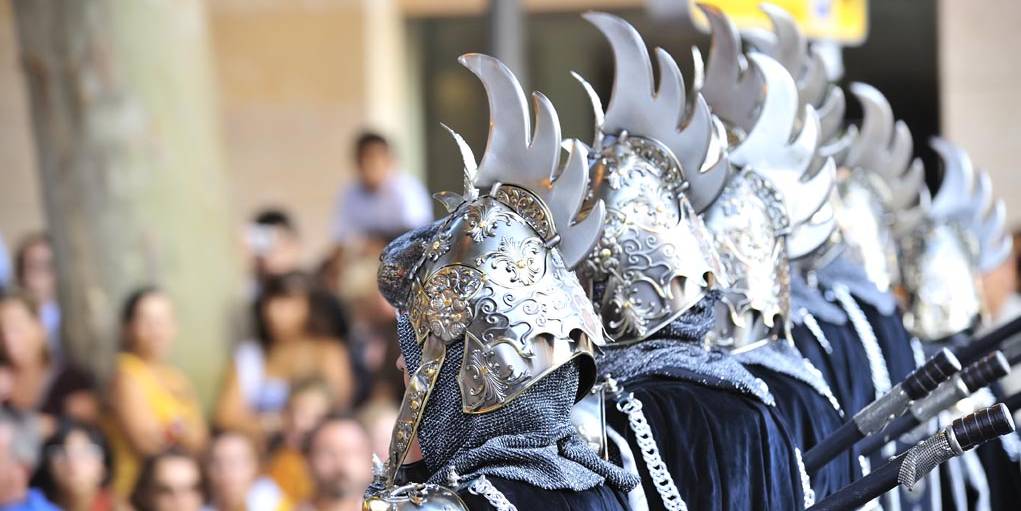August 16th
The Cult of Saint Roch of Montpellier became popular in Dénia in the early 15th century, following the current of popular fervor that spread devotion to this protective saint throughout Europe.
Considering the Moros y Cristianos Festival as an event implies, above all, continuity over time, stemming precisely from the 16th century. In times past, any festival was held to commemorate special occasions and acts with the intention of entertaining, adding splendor, and asserting Christianity's supremacy over Islam, thus ensuring the indispensable support of the Church to carry forward and solidify the festivities. It's therefore a tradition that any valued festival is linked to a saint. The modern Moros y Cristianos festivities are tied to Sant Roc, the patron saint of Dénia, although previously there's evidence of connections to other religious figures or commemorations of significant events like the procession "when the Moors arrived at Saladar," passing through Saint Theodore or the Feast of the Most Precious Blood.
The Cult of Saint Roch
Sant Roc or Saint Roch of Montpellier is a Catholic saint born around 1350 in Montpellier during a tumultuous period marked by the Hundred Years' War and the devastating Black Plague, which decimated a third of the Western population. It was also an era of great famines and terror caused by groups of mercenaries terrorizing and ravaging the countryside. Roch, the son of Montpellier dignitaries, studied medicine and, orphaned at 17, left his city and privileges to become a pilgrim and aid in French and, above all, Italian lands during a period of widespread pandemics. After his death, the Catholic Church recognized him as a saint, making him one of the three patrons of pilgrims, the patron of medical professions, mistreated or unjustly accused animals, and above all, the healer of those afflicted by plagues.
Hence, the cult of Sant Roc spread throughout Europe in the 15th century, and in Dénia, he became the patron saint of the city, being the protector against contagious diseases. It's crucial to understand that during that period, diseases, especially contagious ones, had limited treatments, and devotion to a saint was considered the sole solution. Moreover, Dénia, being an international maritime port and surrounded by marshes, was exposed to a variety of diseases and contagions.
Because of this, the city had two patron saints for diseases, Sant Roc and Saint Theodore, until papal intervention, after which only Sant Roc remained. In his honor, a hermitage and a hospital were erected in the present-day Plaza de la Constitución, where the Church of the Assumption is located.
According to historical records, since 1492, the feast of Sant Roc was considered a prominent city event and was celebrated jointly with the Virgin of the Assumption on August 15th and 16th.
At the beginning of the 17th century, the Brotherhood of Saint Roch was established in Dénia, responsible for organizing the religious activities of the feast in honor of the saint. The "Mayorales" of Saint Roch oversee the festive activities, which coincide with the Moros y Cristianos Festival and extend from early August to the 16th.
The festivities include a mass, the distribution of blessed bread, a fraternity meal, and a procession as part of the religious program. Meanwhile, the "Mayorales" organize sports competitions, gastronomic tastings, some years a fireworks display, and other playful events.
The Image of Saint Roch
The original image of Sant Roc, an ancient medieval wooden carving, was taken to Valencia and is currently housed in the Cathedral Museum of Valencia. However, to maintain the presence of the saint in the city, a new, more modern image of Sant Roc was created, which is located in the Church of the Assumption and is currently carried in the procession on August 16th.


